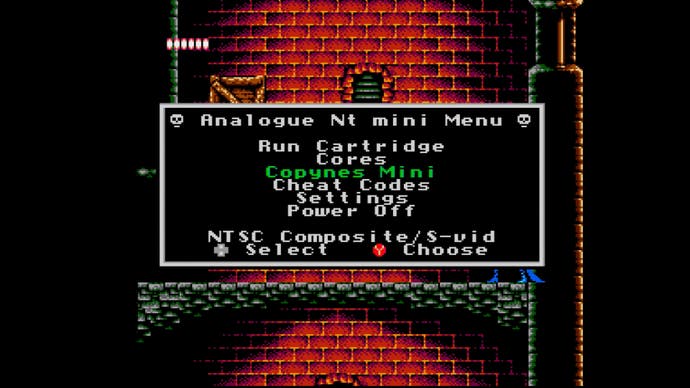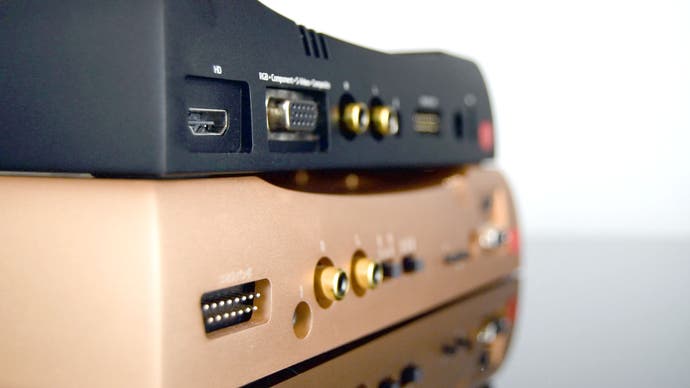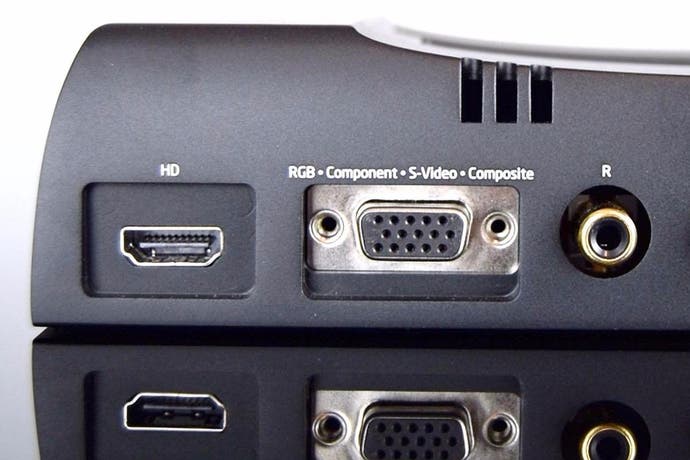DF Retro Hardware: Analogue Nt Mini review
An NES for the 21st century, with unparalleled functionality.
The Analogue Nt Mini is a contemporary interpretation of the Nintendo Entertainment System, housed in a block of aluminum. It starts at $449, supports both digital and analogue video output and plays the entire library of NES and Famicom games with remarkable accuracy. However, if you dig a little deeper you'll find an 8-bit wonder-system of sorts with capabilities that go far beyond recreating Nintendo's original grey box alone.
Let's begin with the beautiful exterior. The Nt Mini is built inside a unibody anodised aluminum shell with a hefty weight and a beautiful finish. Flip it over and a transparent cover showcases the lovingly crafted motherboard housed within. The 'Mini' moniker stems from the slight reduction in case size compared to its bigger brother, the Analogue Nt. It's available in silver and black and feels like a genuinely premium product. The console also ships with an 8bitdo wireless controller and receiver that can also be used on the original Analogue Nt or the NES itself.
The Nt Mini features four controller ports, support for accessories such as the Famicom Disk System and can play games from all regions, while offering analogue and digital audio output. The cartridge slots are improved from the original Nt and now featured smooth, rounded edges to avoid any potential scratching of your cartridges. This hefty console is both well-constructed and highly functional.
While the case is ever so slightly smaller, the real difference between the Nt and the Nt Mini is under the hood. The original Analogue Nt motherboard relies on original NES chips that required the manufacturer to remove parts from cosmetically damaged Famicom/NES hardware - destroying them in the process. Considering the increasing scarcity of such consoles, this was never going to work long term and as a consequence, the original Analogue Nt only saw a limited release.
For the Nt Mini, Analogue took a different approach by contracting the services of Kevin "Kevtris" Horton - one of the most experienced members of the NES modding community. The system in the new machine is based on an entirely original design using Field Programmable Gate Array (FPGA) chip technology. Unlike a traditional chip making process, generic FPGA chips can be programmed to perform any number of functions including those necessary to play NES games. Unlike software emulation, an FPGA can attain perfect timing and accuracy in a way that allows it to behave exactly as the original hardware does. As more consoles are lost to time, FPGA could become the future of preserving consoles of the past.
Aside from the FPGA itself, perhaps the most important feature included with the Mini is support for both analogue and digital video out which makes it possible to use the unit with both an HDTV or a CRT television. The original NES only offers composite video output but mods have been made available enabling both digital HDMI output and analogue RGB output - but never in the same unit. This includes the original Analogue Nt itself, which forced buyers to choose between HDMI output or analogue RGB support. By supporting both, the Nt Mini is much more versatile and fits into a variety of retro setups with ease.
Once you power on the system, you're greeted by a menu system where you can choose to load a cartridge or adjust any number of additional options. For purists, you can opt to boot straight to cartridge rather than the menu. The options menu also allows users to adjust the colour of the LED power light, modify your video preferences, customise the audio and select the colour palette of your choice. NES games did not define colour values in a way that translates directly to higher quality video output, so special palettes are defined to produce accurate results. The Nt Mini ships with several different choices but it's also possible to load custom palettes via an SD card. There's even an option to increase the number of sprites per line, eliminating flicker in many games.

When using the HDMI video output, a rich assortment of options are available. You can choose between 480p, 720p and 1080p at both 50 and 60Hz, for starters, while also enabling scanlines or various filtering options. If you're looking for crisp pixels, the 1080p mode is the best choice but for scanline users, 720p works better. All modes offer users an option to adjust scaling height and width. We recommend a 5x height and 6x width for 1080p to avoid distortion which can appear when using the actual 4:3 option. For 720p users, it's best to go with 3x height and 4x width.
Analogue video output is handled via a DE-15 port on the back of the unit. The Nt Mini does not ship with the required cables but sites such as Monoprice or Retro Gaming Cables can supply what you need. The console supports the full suite of analogue video output options including composite, s-video, YPbPr component and RGB. You can even manually select the type of sync you want when using RGB, which will vary per display device. The entirety of the menu system remains available when using analog video output but most options are disabled. You can still select a desired palette, at least.
Both options produce exceptional results that far exceed what you could achieve on a real NES. Being able to play the Nt Mini on an HDTV is convenient and it looks excellent, but the option to enjoy the system on a CRT monitor is great too. There is zero input latency added when using either option so the responsiveness of each game is determined by your display.

We tested a wide range of games and found the system to be remarkably accurate. Sound is notoriously tricky to get right but the results here are exceptional. Just keep in mind that games using additional chips to enhance audio require the user to manually adjust the "Cartridge Audio" option within the menu. Every single game in our library worked without any detectable issues but even in the face of problems, Kevin and Analogue have responded very quickly eliminating problems in the process.
Out of the box, the Analogue Nt Mini provides the best, most flexible NES experience you can buy. Cheaper FPGA based machines, such as the RetroUSB AVS, are available but lack many of the options available here including analog video output. As is, the system is a great choice for enthusiasts, but thanks to the availability of custom firmware, its capabilities can be extended far beyond.
Since its release, Kevtris has made available a custom jailbroken firmware designed to expand the available features of the system. Analogue itself does not support the use of custom firmware but insists that using it will not void your warranty. The firm considers the system as unbrickable, you'll be covered if you run into problems.

Once you load the custom firmware, the first notable feature is enhanced NES support. A CopyNES function is made available allowing users to duplicate their original cartridges - a key feature for preservation of software. You can also load ROM files directly from the SD card and listen to NSF music files allowing you to enjoy NES soundtracks without jumping into a specific game.
Beyond that, the custom firmware also includes several addition cores that enable the FPGA to duplicate the functionality of other 8-bit consoles. This enables support for the Sega Master System, Game Gear, Game Boy, Game Boy Color, Atari 2600 and Colecovision with the promise of additional cores in the future. Based on our testing, these systems all behave as you would expect, though the Game Boy Color core is still a work in progress. The option to play all of these systems via RGB or HDMI with such accuracy is a remarkable feature and greatly enhances the value of the Nt Mini. The cores currently load ROM files from the SD card but there is the possibility of cartridge adapters being made available enabling users to play real carts from these systems.
Analogue Nt Mini - the Digital Foundry verdict
Overall, the Analogue Nt Mini is a highly capable machine with top-notch build quality and a wealth of options. The FPGA design allows for an accurate presentation of NES and Famicom games as well as full accessory compatibility. Support for both analog and digital video is also a tremendously important feature that allows the system to exceed any other machine on the market in terms of flexibility. When coupled with the ability to play games designed for other 8-bit system, the value proposition only increases.
While the $449 price is certainly steep, it's worth considering the cost of a modded NES with similar functionality. An HDMI or RGB video mod costs at least $100 while an Everdrive N8 or Powerpak costs a minimum of $118. You'll need an original console as well, a core component that continues to increase in price if you don't already own one.

These prices assume that you'll be doing the modding yourself but if you want a pre-modded system with comparable functionality to an Analogue Nt Mini, you're looking at a comparable price. Since a modded console cannot offer digital and analog video output in a single unit nor offer support for other 8-bit consoles, the $449 asking starts to sound even more reasonable for the die-hard retro enthusiast.
Ultimately, this is a premium product for the more affluent enthusiast but with the increasing popularity of retro gaming, it's likely to find a sizeable audience because the sheer level of functionality on offer here is best in class. The Analogue Nt Mini does more than any competing product and offers a long-term solution for playing 8-bit consoles well into the future. For our money, this is the best console ever made for playing 8-bit NES games.


